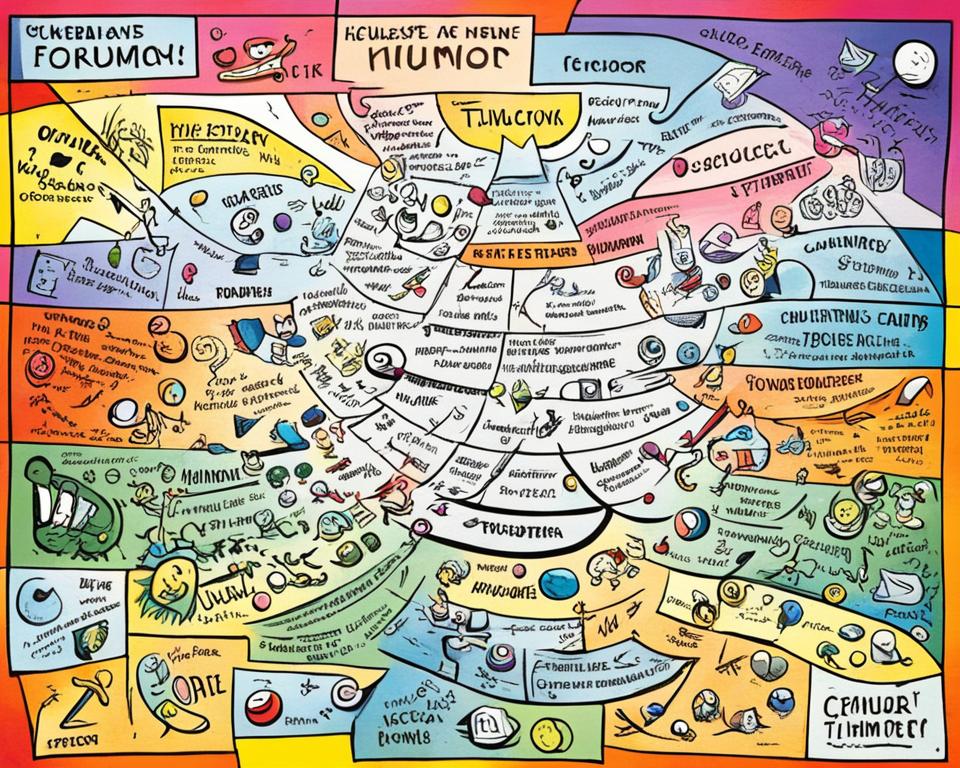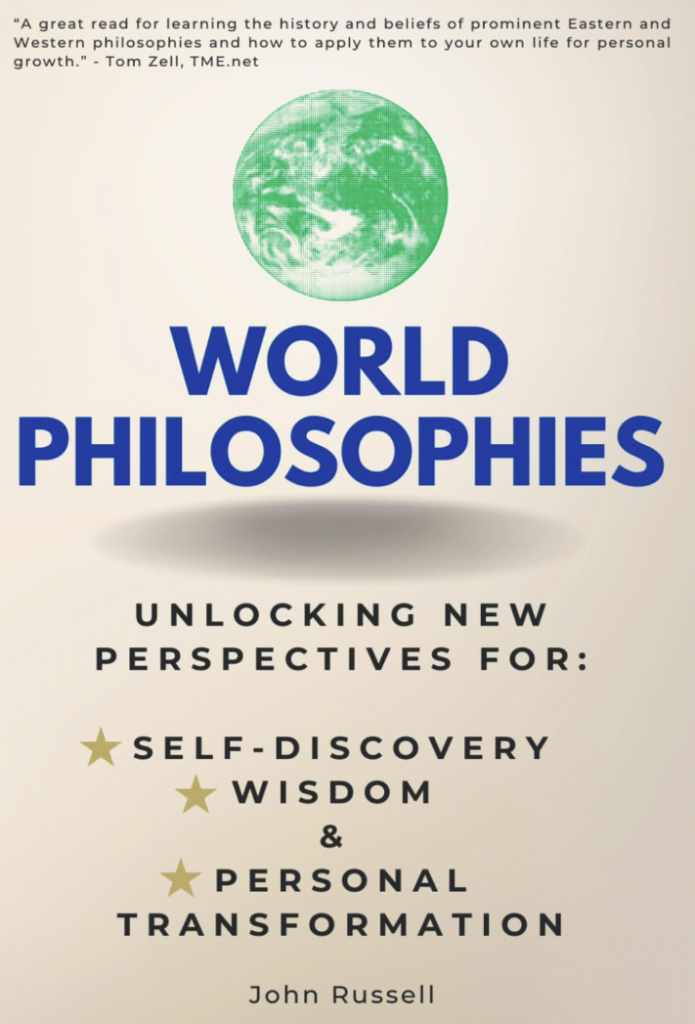Welcome to our exploration of humor! In this article, we delve into the fascinating world of humor perception and humor psychology. Understanding what makes something funny is a complex and multifaceted endeavor, and various theories have been proposed to shed light on this subject.
Researchers have pondered questions such as why we find certain things funny, how humor affects us psychologically, and what role it plays in our social interactions. Today, we will explore three prominent theories that attempt to explain the nature and function of humor: relief theory, superiority theory, and incongruity theory.
As we delve into these theories, we’ll examine their key principles and how they contribute to our understanding of humor. We’ll also discuss their limitations and the ongoing debates surrounding them in the field of humor studies. So let’s dive in and unravel the mysteries of humor!
Key Takeaways:
- The study of humor encompasses various theories that seek to explain its nature, social functions, and what people find funny.
- The three prominent theories discussed in this article are relief theory, superiority theory, and incongruity theory.
- Relief theory posits that humor serves as emotional relief and tension release, while superiority theory suggests that people laugh at the misfortunes or shortcomings of others to assert their own superiority.
- Incongruity theory highlights the role of surprise and unexpectedness in generating laughter.
- These theories provide different perspectives on humor and contribute to our understanding of its complexities, but there is no one-size-fits-all theory that explains all aspects of humor.
Relief Theory
Relief theory suggests that humor serves as a mechanism for releasing pent-up emotions and tension. It proposes that laughter and joy result from the release of excess nervous energy, providing relief from psychological stress. Humor can be a powerful tool in easing the tension caused by fears or anxieties.
This theory has its roots in ancient philosophy, with Aristotle suggesting that humor is a way to release pent-up negative emotions caused by trauma or tragedy. It is believed that humor serves as a homeostatic mechanism, helping individuals regulate their emotions and achieve a state of balance.
Humor as emotional relief can be particularly effective in overcoming sociocultural inhibitions and revealing suppressed desires. It allows individuals to express thoughts and feelings that might otherwise be considered taboo or socially unacceptable. By eliciting laughter, humor provides a safe and non-threatening outlet for addressing sensitive or challenging topics.
It is through the lens of relief theory that we can understand the power of humor to lighten the burden of psychological stress and offer a much-needed release. By providing temporary respite from the pressures of everyday life, humor serves as a valuable coping mechanism.
Overall, relief theory sheds light on the role of humor in tension release and emotional well-being. It emphasizes the significance of laughter as a tool for coping with psychological stress and finding relief from anxieties. By understanding the mechanisms behind humor as emotional relief, we can gain insights into the profound impact that humor can have on our mental and emotional states.
Superiority Theory
The superiority theory of humor suggests that humor arises from a sense of superiority over others. According to this theory, people often laugh at the misfortunes or shortcomings of others as a way to express their own superiority. This concept can be traced back to philosophers like Plato and Aristotle, who emphasized the aggressive and scornful aspects of humor.
Aristotle, in particular, believed that jokes often involve incongruity and hostility. The element of aggression contributes to the humor-inducing quality, whether through jokes, situations, or physical characteristics. However, Aristotle also cautioned against excessive humor and emphasized the importance of using humor effectively and ethically.
One example of the superiority theory in action is when people find amusement in the embarrassing moments of others. Laughing at someone’s public blunder can make individuals feel superior by comparison, boosting their own self-esteem. This expression of superiority through humor can be seen in various forms of media, such as comedy shows that poke fun at celebrities or political figures.
It’s important to note that while the superiority theory explains why people laugh at others’ misfortunes, it does not justify cruel or hurtful humor. Using humor to assert superiority should be done in good taste and considerate of others’ feelings.
Incongruity Theory
Incongruity theory is a prominent perspective in understanding humor, highlighting the role of surprise, unexpectedness, comic twists, and contradictions. According to this theory, humor arises when there is a perceived inconsistency or incongruity between different elements within a joke or situation.
Surprise and unexpectedness play a crucial part in generating laughter. Comedy relies on catching the audience off guard and introducing elements that deviate from their expectations. This unexpected twist creates a sense of amusement and humor.
For example, a punchline that subverts the audience’s expectations or takes a sudden turn can be highly amusing. The juxtaposition of incongruous elements in a joke or situation often triggers laughter.
However, incongruity theory acknowledges that humor also involves an element of aggression and hostility. Incongruous situations or contradictions can be perceived as humorous when they challenge societal norms, expectations, or established patterns of thought.
Philosophers such as Immanuel Kant and Søren Kierkegaard have emphasized the role of incongruity and contradiction in generating humor. Incongruity theory provides a basis for understanding how unexpected and contradictory elements can provoke laughter and amusement.
Examples of Incongruity in Humor
Here are some examples of how incongruity theory manifests in humor:
| Example | Description |
|---|---|
| Puns | Puns rely on the incongruity between words or phrases with multiple meanings, creating a humorous play on words. |
| Irony | Irony involves a contradiction between what is expected and what actually happens, often resulting in humor. |
| Paradoxes | Paradoxes present contradictory statements or situations, challenging the audience’s logical expectations and invoking laughter. |
| Satire | Satire uses exaggeration and incongruity to criticize or mock societal issues, revealing inconsistencies or contradictions for humorous effect. |
Incongruity theory offers valuable insights into the complex nature of humor and how surprise, unexpectedness, and contradictions contribute to its comedic appeal.
Disposition Theory
Disposition theory explores the fascinating relationship between humor and affective disposition, shedding light on why certain comedic elements resonate with individuals. According to this theory, audiences tend to enjoy humor more when it aligns with their preexisting positive or negative feelings towards specific individuals or entities.
For example, when a beloved character in a comedy experiences good fortune, it reinforces the audience’s positive emotions and enhances their enjoyment of the comedic content. On the other hand, if a disliked character faces misfortune, it can generate a sense of satisfaction among viewers, contributing to their enjoyment of the humor.
Example: In the sitcom “Friends,” fans of the show often find themselves laughing more when their favorite character, such as Chandler or Joey, has a pleasant or humorous experience. The positive feelings towards these characters amplify the comedic effect.
Disposition theory emphasizes the significant role of moral judgments and emotional connections in shaping individual responses to humor. By aligning comedic content with the audience’s affective disposition, creators can enhance the overall enjoyment and humorous experience for viewers.
Play Theory
Play theory suggests that humor can be understood as an extension of animal play. It explores the role of humor in social interactions and sees it as a form of playful behavior. Play theorists argue that humor serves various functions, such as tension relief, bonding, and social cohesion. Humor can create a sense of amusement and enjoyment, contributing to positive social dynamics. This theory emphasizes the playful nature of humor and its significance in human interactions.
The Function of Humor in Social Interactions
Humor plays a crucial role in social interactions, enhancing relationships and fostering a sense of connection. It serves as a powerful tool to break the ice, ease awkward situations, and promote camaraderie. By engaging in playful banter and sharing humorous experiences, individuals can establish a sense of shared understanding and closeness. Humor acts as a social lubricant, helping to reduce tension and create a positive atmosphere.
Furthermore, humor acts as a bonding mechanism, strengthening the social fabric of a group. When people laugh together, they form a sense of unity and solidarity. It builds trust and facilitates cooperation, enhancing teamwork and collaboration in various contexts, including work, relationships, and friendships.
Moreover, humor can serve as a relief valve for stress and tension. Laughter releases endorphins, which are natural mood boosters, promoting a sense of well-being and relaxation. In stressful situations, humor can provide a welcome escape, allowing individuals to momentarily set aside their worries and find joy in the moment.
In summary, play theory offers valuable insights into the function of humor in social interactions. It highlights the playful nature of humor and its ability to foster positive connections, relieve tension, and promote social cohesion. By embracing humor and engaging in lightheartedness, individuals can enhance their relationships and create a more enjoyable and harmonious social environment.
Conclusion
Theories of humor provide valuable insights into the complex and multifaceted nature of humor, offering different perspectives on its origins and purposes. Relief theory suggests that humor serves as a means of emotional relief and tension release, providing a cathartic experience for individuals. Superiority theory highlights the expression of superiority and aggression in humor, as people find amusement in the misfortunes of others. Incongruity theory emphasizes the role of surprise and unexpectedness in generating laughter, with comedic twists and contradictions creating comic relief.
Disposition theory explores the connection between humor and affective disposition, showing how individuals’ positive or negative feelings towards certain individuals or entities can influence their enjoyment of humor. Lastly, play theory views humor as an extension of playful behavior, illustrating its function in promoting bonding, tension relief, and social cohesion.
Although these theories shed light on different aspects of humor, there is no definitive theory that explains all facets. The nature of humor is inherently complex and subjective, making it challenging to establish a comprehensive explanation. As researchers continue to delve into the study of humor, there is ongoing room for exploration and further research to uncover additional insights into the fascinating and universal phenomenon of humor.




